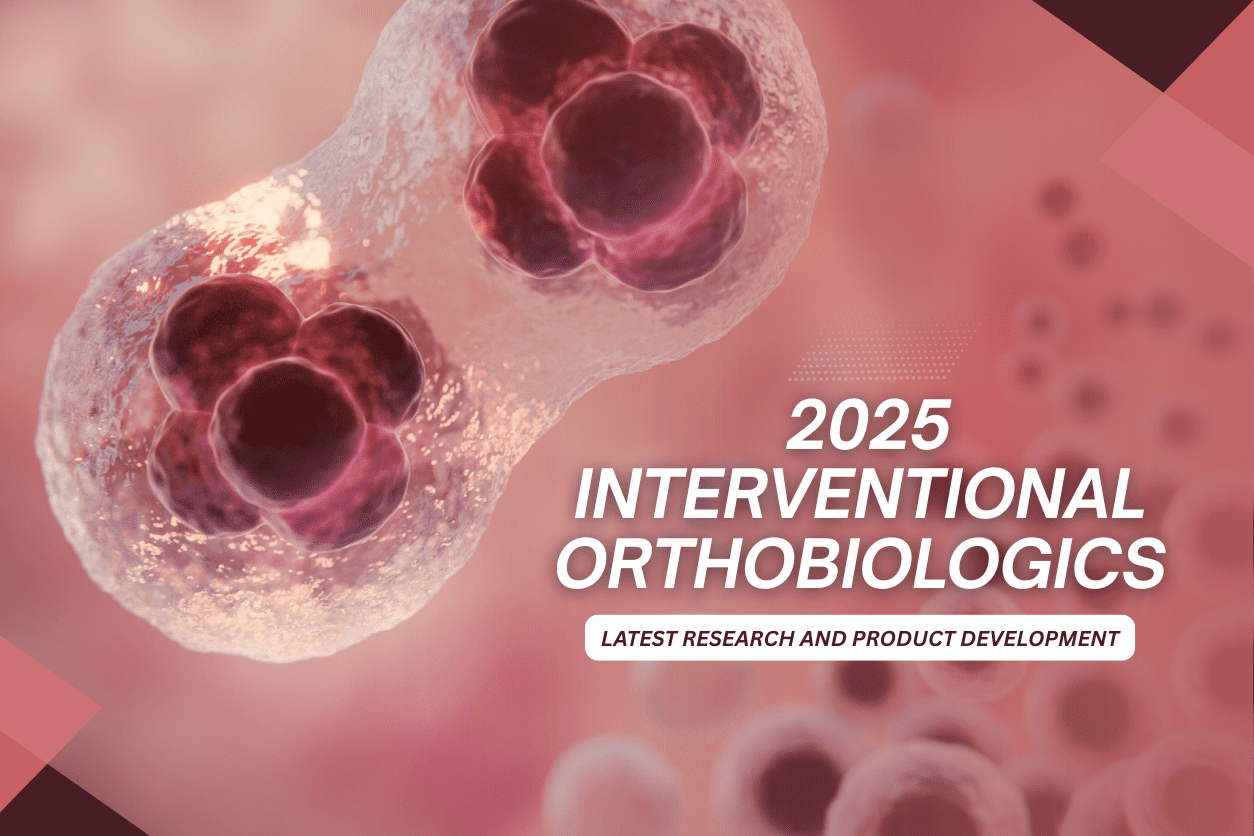
In recent years, physicians immersed in orthobiologics literature have increasingly recognized the critical importance of the dose and concentration of...

Living with chronic knee osteoarthritis and joint pain can be debilitating, affecting daily activities and overall quality of life. The myriad treatment options healthcare professionals present can be overwhelming when seeking relief. From physical therapy to surgery, the choices are vast and varied. One emerging field gaining traction is regenerative medicine, which aims to repair damaged tissues and restore normal function, offering a potentially less invasive alternative to traditional surgery. In this post, we’ll explore what regenerative therapy entails and how it differs from surgery. We will also help you make an informed decision about the best treatment for your specific situation.
Regenerative medicine for knee osteoarthritis (OA) is a cutting-edge medical approach that harnesses the body’s natural healing processes to repair and replace damaged tissues. Unlike traditional treatments that often focus on alleviating symptoms, regenerative medicine addresses the root cause of the problem. There are several types of treatment options in regenerative medicine that are effective against joint pain, including:
Prolotherapy involves injecting natural compounds into the damaged area to stimulate the body’s healing mechanisms, promoting tissue repair and regeneration. A 2022 review highlighted prolotherapy as a safe and effective option for improving pain, function, and quality of life [1].
PRP treatment uses bioactive proteins and growth factors from the patient’s blood, mainly plasma, to enhance healing. Blood is drawn and centrifuged to separate the components, and the PRP layer is injected into the affected area under ultrasound guidance. Research in 2022 indicated that custom-dose PRP injections can effectively reduce pain and improve functionality [2].
Stem cells, which are undifferentiated cells capable of becoming any cell type, are used to repair joint damage. These cells are typically derived from adipose tissue or bone marrow. A 2022 study found that combining bone marrow-derived and adipose-derived mesenchymal stem cell injections was safe and effective for treating joint pain [3].
Combining different regenerative therapies can yield better results. Many combinations use PRP, Bone Marrow Aspirate Concentrate (BMAC), Stromal Vascular Fraction (SVF), and Hyaluronic acid (HA) in different proportions, which may be followed by Ozone therapy, infrared radiation (IR) radiation, Laser or Ultrasound therapy, and Physical therapy. For instance, PRP therapy combined with physiotherapy has shown significant improvements in pain relief and function compared to PRP alone [4].
GOLDIC (Gold Induced Cytokines) therapy involves the interaction between gold particles and blood cells to produce healing proteins like gelsolin, which promote stem cell differentiation and reduce inflammation. A 2021 clinical trial reported that GOLDIC therapy provided rapid and sustained pain relief without serious side effects [5].
Traditional surgery often involves removing or replacing damaged tissue, which can be effective but also comes with risks such as infection, scarring, and long recovery times. In contrast, regenerative medicine for knee osteoarthritis (OA) aims to stimulate the body’s own repair mechanisms through injections of autologous stem cells or other regenerative compounds like bioprotein and cytokines promoting natural healing. This less invasive approach can be used to treat a variety of conditions, including joint pain and chronic wounds.

Financial considerations are crucial when deciding on a treatment plan. Regenerative therapy, while still relatively new, can be more cost-effective than traditional surgery. On average, the cost of regenerative therapy for knees is about one-third that of knee replacement surgery. Additionally, regenerative medicine for knee osteoarthritis (OA) can often address multiple joints in a single session, offering further cost savings. In contrast, knee replacement surgery averages around €20 000 to €25 000, not including follow-up visits or physical therapy, and typically only addresses one joint at a time.
However, it’s important to note that most insurance providers do not currently cover regenerative therapies or only partially cover them, which can significantly impact out-of-pocket expenses. Understanding these financial implications is essential for making an informed decision.
When deciding between surgery and regenerative therapy, several factors should be weighed:
Making the best decision for your health involves exploring all available options and consulting with healthcare professionals. Your doctor can provide guidance based on your specific condition and medical history. Additionally, conducting your own research, seeking a second opinion, and asking questions will empower you to make an informed choice. Advocate for yourself, understand the pros and cons, and make the decision that best suits your individual needs.

In recent years, physicians immersed in orthobiologics literature have increasingly recognized the critical importance of the dose and concentration of...

Joint health is a major characteristic of mobility as well as overall quality of life. From cradle to grave, accidents...

Interventional orthobiologics research has been progressing rapidly, with numerous studies and product pipelines poised to potentially..

Musculoskeletal (MSK) conditions such as tendonitis, osteoarthritis, and ligament injuries affect millions globally, impairing mobility and quality of life. In...

We use essential cookies to make our site work. We'd also like to set analytics cookies that help us make improvements by measuring how you use the site. Clicking Reject All only enables essential cookies. For more detailed information about the cookies we use, see our Cookies page. For further control over which cookies are set.
Thank you {{_full_name}}!
We will be in contact with you shortly.